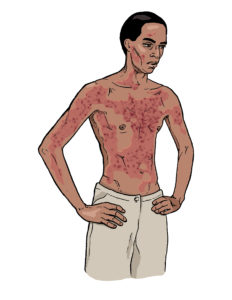
The death rates in women have stayed the same or have declined
The rate of men dying from malignant melanoma has risen in populations around the world. On the other hand, rates for women are steady or falling at least in some countries.
 New research presented at the 2018 NCRI Cancer Conference revealed these trends.
New research presented at the 2018 NCRI Cancer Conference revealed these trends.
Researchers studied worldwide data on deaths gathered by the World Health Organisation, focusing on 33 countries with the most reliable data. They found that melanoma death rates in men were rising in all but one country.
They say more research is needed to understand the reason for this trend, but in the meantime, more public health efforts targeted at men may be needed to raise awareness of the disease and of sun-smart behaviours.
More public health efforts targeted at men may be needed to raise awareness of the disease and of sun-smart behaviours
The work was presented by Dr Dorothy Yang, a junior doctor at the Royal Free London NHS Foundation Trust, UK. She said: “The major risk factor for melanoma is overexposure to ultraviolet radiation, either from sun exposure or from using sunbeds. Despite public health efforts to promote awareness of melanoma and encourage sun-smart behaviours, melanoma incidence has been increasing in recent decades. However, some new reports have identified signs of stabilisation and decline in melanoma death rates in places like Australia and Northern Europe.
“We wanted to conduct an up-to-date analysis of recent melanoma mortality rates across the world to try to understand these patterns, and whether new diagnosis, treatment and prevention strategies are having any effect.”
The researchers studied age-standardised death rates in the 33 countries between 1985 and 2015. These rates take into account the effects of some countries having an aging population and others having a younger demographic. They extracted the rates for malignant melanoma, the most dangerous form of skin cancer. They compared the rates for men and women and looked at trends over time.
In all countries, the rates were higher in men than in women. Overall, the highest three-year average death rates for 2013 to 2015 were found in Australia (5.72 per 100,000 men and 2.53 per 100,000 in women) and Slovenia (3.86 in men and 2.58 in women), with the lowest in Japan (0.24 in men and 0.18 in women).
The Czech Republic was the only country where the researchers found a decrease in men’s melanoma death rate, where there was as estimated annual percentage decrease of 0.7% between 1985 and 2015. Israel and the Czech Republic experienced the largest decreases in mortality rates in women, 23.4% and 15.5% respectively.
Dr Yang added: “More research will be needed to explore the factors underlying these trends. There is evidence that suggests men are less likely to protect themselves from the sun or engage with melanoma awareness and prevention campaigns. There is also ongoing work looking for any biological factors underlying the difference in mortality rates between men and women.”












